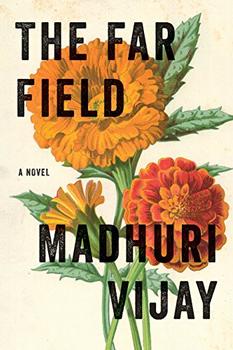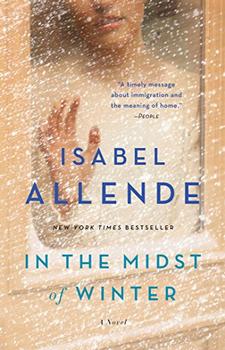Summary | Excerpt | Reviews | Beyond the book | Read-Alikes | Genres & Themes | Author Bio

Karina Sainz Borgo's It Would Be Night in Caracas, translated from the Spanish by Elizabeth Bryer, sketches a vivid portrait of present-day Caracas, the capital of Venezuela. The story follows protagonist Adelaida Falcón, 38, as she struggles to recover from her mother's recent death from cancer and contend with Caracas's social upheaval. The city, like the rest of Venezuela, has been rocked by protest and political instability since the death of former President Hugo Chavez in 2013, and volatile world oil prices now threaten to collapse the nation's economy, which heavily depends on exporting oil. Sainz Borgo's clear, poetic prose and richly textured account of Venezuelan history deliver a remarkable panorama of a country, a city, and a community on the verge of violent change.
At the novel's start, civil unrest and violence on the streets have effectively trapped Adelaida in her apartment building. Her fifth-floor balcony offers a prime vantage point from which to witness the chaos below:
I opened the window and peeked out at our treeless street, somehow discerning the smell of maize bread amid the deathly clouds of smoke. I closed my eyes and inhaled deeply the remains of a life story turned into a pile of sticks.
Adelaida is at risk in the way that everyone in the city is at risk, but she also has specific challenges. The cost to bury her mother is outrageously expensive, as is medical care—even antibiotics carry a hefty price. Since the economy is disrupted on every level, her livelihood as a journalist and editor also has been threatened. Her usual media outlets are either too dangerous to work with or cannot pay as usual. Worse yet, her former lover, a press photographer, has been killed by Colombian guerrillas.
One afternoon, Adelaida risks a rare trip to the store, and returns to find squatters in her apartment. They're an organized and well-armed gang trading in black market goods. Led by the short-fused La Mariscola, the gang locks her out of a place that holds most of her memories, all of her books, and her mother's prized possessions. The gang assaults her, and she stumbles upstairs, where a seamstress neighbor stitches and bandages her wound. She then finds refuge in another apartment, but more unexpected complications soon arise. Exasperated, she realizes that she must shed her previously mild-mannered, bookish identity and take direct action to survive.
On another venture out, desperate to acquire basic female hygiene items on the black market, the protagonist is caught up in a violent demonstration. She bumps into Santiago, the younger brother of her closest friend, Ana. Santiago, a radical activist, has recently escaped from prison. He saves Adelaida from the demonstration's violence and seeks temporary refuge in her borrowed apartment; at risk for re-arrest, he intensifies the danger she faces. The two have different beliefs about how to resist oppression during desperate times, and a decade age difference, but they form a memorable bond based on forced proximity—not exactly romance, more like comrades-in-despair.
The author's adept plotting builds suspense throughout the novel. In flashbacks, readers learn about Adelaida's mother, who grew up in a rural, coastal area but moved to Caracas to build a new life as a single mother. Adelaida's fairly prosperous middle-class childhood offers a glimpse of a time when life seemed normal in Venezuela. As food scarcity rocks the city in the present, for instance, she recalls passing a granary silo stamped P.A.N. on a childhood trip to the coast (for more information on P.A.N. and Venezuelan cuisine see Beyond the Book):
P.A.N flour nourished thousands of men and women, until the second wave of hunger and shortages saw it disappear from the shelves and become a luxury item. True democracy dwelled in that industrialized flour. Whether rich or poor, everyone ate that starch, which was baked into so many of our memories.
Memories of the past effectively punctuate the tension of present circumstances. High stakes combined with a series of dramatic reversals in fortune propel the novel to a satisfying, if unexpected, conclusion.
It Would Be Night in Caracas offers provocative reading for book groups and will appeal to fans of contemporary Latin American fiction. Themes include grief, survival, social change, identity, personal risk and migration.
![]() This review was originally published in The BookBrowse Review in November 2019, and has been updated for the
September 2020 edition.
Click here to go to this issue.
This review was originally published in The BookBrowse Review in November 2019, and has been updated for the
September 2020 edition.
Click here to go to this issue.

If you liked It Would Be Night in Caracas, try these:

by Madhuri Vijay
Published 2019
Gorgeously tactile and sweeping in historical and socio-political scope, Pushcart Prize-winner Madhuri Vijay's The Far Field follows a complicated flaneuse across the Indian subcontinent as she reckons with her past, her desires, and the tumultuous present.

by Isabel Allende
Published 2018
New York Times and worldwide bestselling "dazzling storyteller" (Associated Press) Isabel Allende returns with a sweeping novel about three very different people who are brought together in a mesmerizing story that journeys from present-day Brooklyn to Guatemala in the recent past to 1970s Chile and Brazil.
Your guide toexceptional books
BookBrowse seeks out and recommends the best in contemporary fiction and nonfiction—books that not only engage and entertain but also deepen our understanding of ourselves and the world around us.